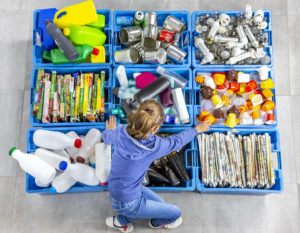




10 tips on how to monitor our kids’ internet and social media use to encourage media literacy
We spoke with a panel of experts in Singapore, who gave us 10 tips on how to monitor our kids’ Internet use and encourage responsible tech habits. Useful info given how tech-savvy teens are constantly finding the next tech platform to evade parental monitoring!
Read more: Parent Resources: Guide to Kids Internet Safety, Social Media & Screen Time
1. Age matters when it comes to the use of devices.
Lucian Teo, user education and outreach manager at Google (LT): The rule of thumb in my home is that we don’t give control to the child until they are able to understand that it is a privilege that comes with certain responsibilities. We might allow our 2-year-old to watch a video but they’re not allowed to handle the device. When they’re older and understand the boundaries we set, like which YouTube channels they’re allowed to watch and how long for, we allow them control of the device.
2. Encourage children to think of real-life repercussions before posting or commenting.
LT: For any communication app or tool, the most important thing is to teach kids about being responsible in how they use it. This means helping them understand what’s appropriate behaviour. One of the most basic things I remind my children is that if they wouldn’t say it to someone’s face, they shouldn’t email, instant-message or post it as a comment. It’s also important that they know not to overshare, especially private or confidential information.
3. Balance your kids’ right to privacy with monitoring.
LT: In our family, privacy is always balanced with a message of intimacy. We emphasise to our children that we monitor their use of digital devices because we love them and want to ensure that nothing threatens their well-being. It is with this understanding that we keep an eye on all their communications. This is also how we’ve been able to teach them how to show respect when communicating online, address conversations that could have veered towards online bullying, and also the basics of sharing information.


Tara Linney, educational technology coach at Singapore American School (TL):
If a child is looking to set up a personal email account, I’d recommend that you add the parent’s personal email to the forwarding list. By doing this, messages sent to the child’s account will also be sent to the parent’s account. In addition, set the backup email address as the parent’s email address; that way, if a child forgets his/her password, then the password request would go directly to the parent. If the child is over 13 years of age, then I’d suggest just having the backup email address be the parent’s email.
4. Parent controls are a must when your kids get on the Internet.
TL: Turning on an app like Google Safe Search helps parents filter out mature content that may not be suitable for children. It’s easy to switch on—just go to your Settings by clicking on the cog at the top right-hand side of any Google search results page to activate it, and lock SafeSearch. YouTube Kids was specially created for kids between two and eight years old, and gives parents more control over what their kids watch and for how long. You can turn off the Search function if you would like to restrict your child’s experience to a more limited set of content, or even restrict them from watching certain videos and channels. A built-in timer helps limit screen time by telling kids when it’s time to stop watching. Every family has different content standards, and no filter, while helpful, will be able to remove all content parents might deem inappropriate for their children. Parents still need to be vigilant when their children use the Internet.


Jay Thompson, educational technology and innovation coordinator at GEMS World Academy Singapore (JT):
Creating a social media profile for a young child can be a fun and engaging way to record those important moments. That said, it is important to remember that nothing online is ever truly private and once created can be permanent. With this in mind, think about possible repercussions for your child in later life and be smart about what you post and who can see it.
5. When it comes to chat, don’t talk to strangers
LT: With any communication app, I remind my children not to pick up calls or respond to messages from unfamiliar numbers. Parents can also check call and messaging histories to make sure kids aren’t spending too much time on the phone, or chatting with strangers.
6. There’s no such thing as “kid-friendly social media”.
JT: Firstly, you should ask yourself, “Why does my child need to be on social media?”. If you have no powerful argument, then maybe this is not the right time. Secondly, you need to be able to set clear expectations and consequences. This will ensure your child understands that Internet access is a privilege. Finally, develop a partnership—your child will be more open to asking for advice and support if they feel you are open and supportive. Facebook is probably the best place to start. Set up strict privacy controls, have a shared password and add your child as a friend. It comes down to the way in which access is managed.


7. Twitter and Facebook are miles ahead of Snapchat
TL: Many of these social media apps require users to be at least 13 years of age. So, whenever children below 13 create accounts, it’s important that parents monitor their communication on them. This is how I would rank kid-friendly apps from most friendly to the least and why.
– Twitter: Tweets can be protected, and photo tagging controlled. Also, it disallows direct messages to be received from non-followers. Currently, there is no disappearing photo or video feature. In addition, tweets can only be 140 characters long (as of this publication date), requiring children to create succinct, short tweets.
– Facebook: One of the benefits of Facebook is that it allows children to transparently express themselves with a variety of emoticons. Direct communication, as well as public communication, can occur between children on a public or private basis. Stories allow “friends” to view them but they don’t disappear as stories do on Instagram and Snapchat. Read about Facebooks’ new Chat App for under 13s here.
– Instagram: Users can create a Private Account, which allows only followers to view the photos or videos posted. There is a direct messaging component similar to that on Snapchat, with disappearing photos and videos. However, these messages can only be exchanged between users who are connected.
– Snapchat: The disappearing effects of Snapchat content make it an app worth keeping a watchful eye on. Often, when something disappears, we as humans think that it is gone forever. Children’s thinking operates in the same way. Thus, the nature of sharing snaps creates an environment of reckless abandon—we share things that we normally wouldn’t thinking that it will be erased forever.
8. Try to stay on top of social media trends.
TL: Keeping apprised of new apps can be tricky, as it seems like there’s a new one being released every day. Common Sense Media is a great place to review apps before children download them. By accessing the “Parent Reviews” section, you’re able to filter by app genre. In selecting “Social Networking”, you can easily see what parents have to say about an app before children download them.
9. Remain honest and open with your kids.
JT: Together you should determine expectations and guidelines for usage and make an agreement. If you think of this as a partnership rather than a dictatorship, you are more likely to empower your child to make the right decisions and seek support when needed. The importance of supportive parent/child relationships ensures you are approachable should questions or problems arise. Banning of devices only serves to push bad behaviour underground; instead, an approach of education and student empowerment is preferred.
10. Encourage your kids to start thinking safe for themselves
LT: It’s important for parents to share their rationale so the children understand how to make decisions for themselves. It’s easy to judge quickly without listening to what the children have to say, so be patient! Often children have a good grasp of the fundamental principles and are able to suggest even better solutions.






 View All
View All





 View All
View All







 View All
View All






